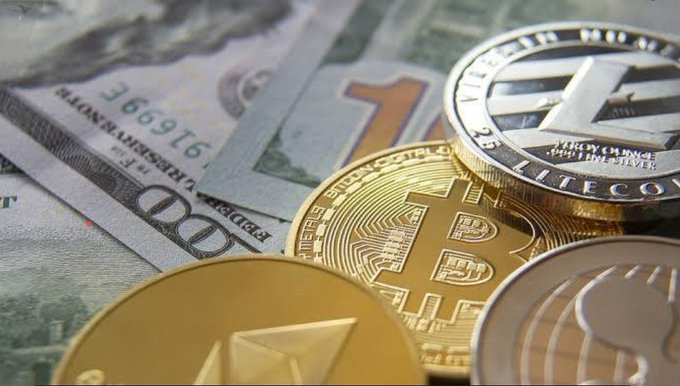In this post, Ill break down the fight between Stablecoins and regular Cryptocurrencies, shining a light on what makes each tick. Both sit on the blockchain, yet they answer different questions ask them side-by-side and the gap becomes clear.
While stablecoins promise a calm price ride, Bitcoin and its cousins flaunt their wild swings and hope for big, long-haul gains.
What Are Cryptocurrencies?
Cryptocurrencies are basically money that lives entirely online. They use tricky math called cryptography to stay safe, and they run on open blockchains where no single bank calls the shots. Bitcoin kicked everything off in 2009 and still hogs the spotlight.
Ethereum, Litecoin, and Solana grab their share of attention, too. Prices swing wildly from hour to hour, and nothing tangible or official backs them up; the sticker price just reflects who wants in and who wants out at any given moment.

People dabble with digital coins because they want cash that isnt controlled by a central bank. The perks show up as decentralization, crystal-clear transaction records, and a tougher time blocking payments.
You can send coins directly to a friend, power a dApp, code a smart contract, or simply buy and hold them in hopes of a price bump.
What Are Stablecoins?
Stablecoins belong to their own small corner of the crypto universe. Each coin is usually tied to something steady-say the US dollar, the euro, or even a chunk of gold-so its price doesnt bounce around like Bitcoin or ether.

Because of that price anchor, many people treat a stablecoin as a handy digital version of regular cash when they work inside a blockchain ecosystem.
Key Differences Between Stablecoins and Cryptocurrencies
| Feature | Cryptocurrencies | Stablecoins |
|---|---|---|
| Volatility | High | Low |
| Backing | No inherent backing | Backed by fiat, crypto, or algorithms |
| Use Case | Investment, dApps, payments | Payments, remittances, price stability |
| Examples | Bitcoin, Ethereum, Solana | USDT, USDC, DAI |
| Purpose | Decentralized digital currency | Stable digital equivalent of fiat |
| Price Stability | Fluctuates with market demand | Pegged to an external asset |
Use Cases for Cryptocurrencies
Investment and Trading
Cryptocurrency prices bounce around so much that lots of people treat them like a quick gamble. Buy low, watch the charts, then sell high-most traders just want that fast thrill, and the money may follow.
Decentralized Applications
Ethereum isnt just a coin; it powers entire mini-webs called dApps. Plug in a smart contract, and suddenly youre messing with DIY loans, digital art sales, and a bunch of other finance tricks that live outside the banks walls.
Hedging Against Inflation
Bitcoin gets nicknamed digital gold because some savers hope it wont lose its shine as dollars lose value. When prices creep up, that shiny coin looks like a handy shield against a shrinking wallet.
Use Cases for Stablecoins
Remittances and Payments
Stablecoins let you zip money overseas almost instantly. The fees stay low, and the dollar value hardly wigples, so grandma gets exactly what you sent.
DeFi and Yield Farming
In the DeFi world, sticking your stablecoins into a lend-or-stake pool can earn you interest. That way, wild crypto price hops matter a lot less.
Trading Pair and Safe Haven
Most crypto exchanges list stablecoins as the go-to trading pair. If the market feels shaky, a quick swap into a stable token keeps your value safe until you decide next steps.
Advantages of Cryptocurrencies

Breaking Away from Banks
Many folks like the idea of moving money outside the reach of old-school banks. That freedom, called decentralization, can feel a lot fresher than waiting in line for a wire transfer.
Wild-Card Gains
Cryptocurrency prices jump and drop faster than just about anything else on the market. A smart buy today could leave your wallet looking very different by next week, for better or worse.
New Apps, New Possibilities
Blockchains aren-t just about coins anymore. People are building games, loans, and even digital art marketplaces on the same tech, and that constant tinkering keeps investors coming back for a closer look.
Advantages of Stablecoins
Price Stability
Nobody likes watching an investment balloon one minute and sink the next. A stable price helps keep those nerves in check and keeps risk at arm’s length during wild market swings.
Instant Cross-Border Payments
Want to move money from one side of the globe to the other? A couple taps will usually do the trick and, even better, the fees barely put a dent in your wallet.
Seamless System Hook-Ups
Plugging into existing setups is often a hassle, yet this tool connects neatly with both crypto wallets and good old-fashioned bank wires. No excessive coding, just quick work to get cash flowing.
Conclusion
In the end, stablecoins and classic cryptocurrencies sit under the same digital-roof yet behave very differently. Coins such as Bitcoin or Ethereum buzz with promise and wild price swings, while stablecoins anchor themselves to a single dollar, euro, or other fiat so their value hardly budges.
Spotting that contrast lets shoppers, traders, and newbie investors pick the right coin for their pocket-book and tummy-for-volatility. Give the market six months, a year, maybe longer, and you will probably find both families of tokens still pumping life into tomorrows digital banking.
FAQ
What is the main difference between stablecoins and cryptocurrencies?
The main difference lies in price stability. Stablecoins are pegged to assets like fiat currency (e.g., USD) to maintain a stable value, while cryptocurrencies like Bitcoin and Ethereum are highly volatile and fluctuate based on market demand
Are stablecoins a type of cryptocurrency?
Yes, stablecoins are a type of cryptocurrency designed to minimize price volatility. They operate on blockchain networks like other cryptocurrencies but are backed by assets to keep their value stable.
Which is better for investment – stablecoins or cryptocurrencies?
Cryptocurrencies offer higher growth potential but come with greater risk. Stablecoins are better for preserving value, earning passive income through DeFi, or avoiding volatility.








